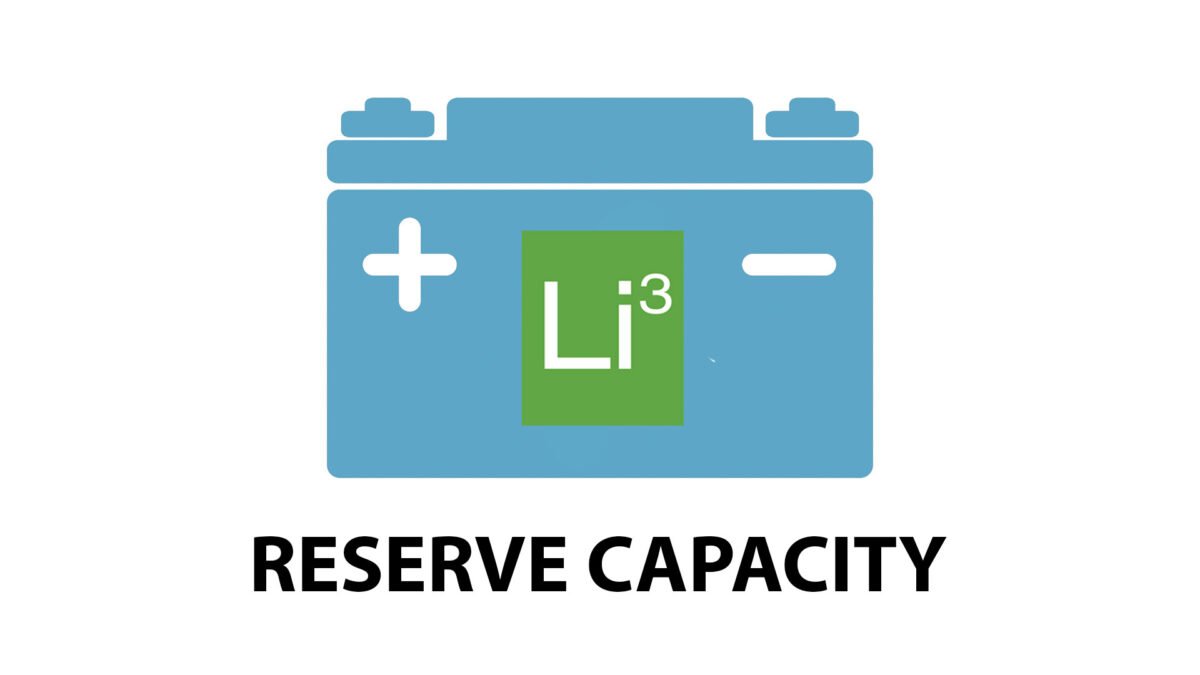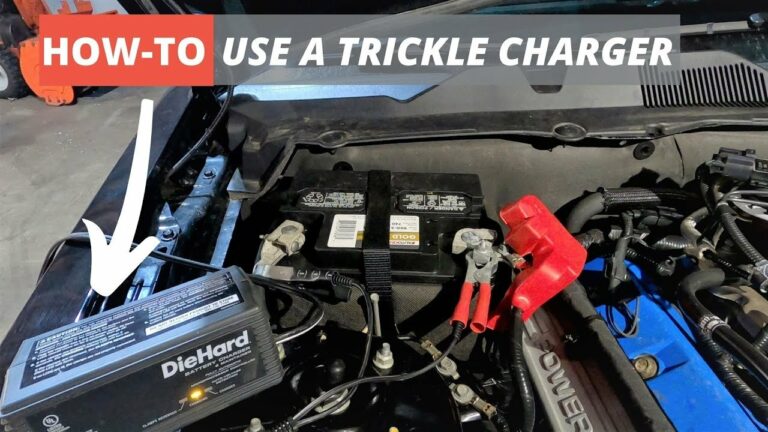How to Test a Car Battery’s Reserve Capacity?
Wondering How to Test a Car Battery’s Reserve Capacity? It’s a common concern for car owners who want to ensure their battery is functioning optimally. Fortunately, there’s a straightforward solution: conducting a reserve capacity test. By assessing the battery’s ability to run electrical systems when the alternator is not charging, you can gauge its reserve capacity and determine if it’s time for a replacement. In this article, we’ll guide you through the simple steps of testing your car battery’s reserve capacity. So, let’s dive right in!
How to Test a Car Battery’s Reserve Capacity?
Testing a car battery’s reserve capacity is an essential maintenance task that can help ensure your vehicle starts reliably and functions properly. The reserve capacity of a battery refers to its ability to sustain power output over an extended period. In this article, we will guide you through the process of testing a car battery’s reserve capacity, step by step. From understanding the importance of reserve capacity to performing the actual test, we’ll cover everything you need to know to keep your battery in excellent condition.
Understanding Reserve Capacity
Reserve capacity is a crucial specification to consider when evaluating a car battery’s performance. It measures the battery’s ability to deliver a consistent amount of power over a specific timeframe. A higher reserve capacity means the battery can power essential electrical components, such as lights, ignition systems, and audio systems, for a more extended period when the vehicle’s engine is off.
Why is Reserve Capacity Important?
Having a sufficient reserve capacity ensures that your vehicle’s electrical components receive power even when the engine is not running. It becomes particularly crucial during situations where the battery is the sole power source, such as when camping or in emergency scenarios. Reserve capacity also plays a vital role in preventing voltage drops and fluctuations, providing stable power flow to sensitive electronics.
Signs of Low Reserve Capacity
It’s essential to be aware of the signs indicating a low reserve capacity in your car battery. These signs can help you diagnose potential issues early and take appropriate action. Here are some common indicators to look out for:
1. Difficulty Starting the Engine:
If your battery’s reserve capacity is low, you may experience difficulty starting the engine, especially in colder weather or after the vehicle has been parked for an extended period.
2. Dimming Headlights and Electrical Issues:
Insufficient reserve capacity can also cause your headlights to become dimmer than usual. Additionally, you may notice a decline in overall electrical performance, such as slower window operation or weak radio reception.
3. Frequent Jump Starting:
If you find yourself jump-starting your vehicle frequently, it could be an indication of a battery with low reserve capacity.
Testing a Car Battery’s Reserve Capacity
Now that we understand the importance of reserve capacity and how to recognize potential issues let’s dive into how to test a car battery’s reserve capacity. The process involves using a specialized tool called a battery tester. Battery testers are widely available and relatively easy to use.
1. Gather the Necessary Tools:
Before starting the test, make sure you have the following tools ready:
– Safety gloves
– Safety goggles
– Multimeter or battery tester
– Wire brush or battery cleaning tool
2. Safety Precautions:
It’s crucial to prioritize safety when working with car batteries. Follow these precautions:
– Wear safety goggles and gloves to protect yourself from any sparks, chemicals, or battery acid.
– Park the vehicle in a well-ventilated area away from any open flames or sparks.
– Ensure the ignition is turned off, and the keys are removed from the vehicle.
3. Inspect the Battery:
Start by visually inspecting the battery for any signs of damage, leaks, or corrosion. If you notice any issues, it’s advisable to address them before proceeding with the reserve capacity test.
3.1. Cleaning the Battery:
If there is corrosion on the terminals, use a wire brush or battery cleaning tool to remove it. Corrosion can disrupt the electrical connection and affect the accuracy of the test results.
3.2. Checking Fluid Levels:
For batteries with removable caps, check the fluid levels and top up with distilled water if necessary. Ensure the plates are fully submerged in the electrolyte solution, as low fluid levels can impact the battery’s performance.
4. Connect the Battery Tester:
Follow these steps to connect the battery tester:
– Identify the positive (+) and negative (-) terminals on the battery.
– Connect the positive (red) lead from the battery tester to the positive terminal on the battery.
– Connect the negative (black) lead from the battery tester to the negative terminal on the battery.
5. Follow the Battery Tester Instructions:
Refer to the manufacturer’s instructions for your battery tester to understand the specific test procedure. Generally, you will need to follow a series of prompts or switch the tester to the appropriate testing mode.
6. Perform the Reserve Capacity Test:
Once the battery tester is configured, perform the reserve capacity test by following the on-screen instructions. The tester will typically provide a reading indicating the battery’s reserve capacity in minutes.
7. Interpret the Results:
The test results will help you determine the health of your battery’s reserve capacity. If the reading falls within the manufacturer’s specified range, your battery is in good condition. However, if the reading is significantly lower, it may be time to consider replacing the battery.
8. Disconnect the Battery Tester:
After completing the test and interpreting the results, disconnect the battery tester by removing the positive and negative leads from the battery terminals.
Maintaining Your Car Battery’s Reserve Capacity
To ensure your car battery retains its reserve capacity and performs optimally, follow these maintenance tips:
1. Regularly Inspect and Clean the Battery:
Check your battery for any signs of damage, leaks, or corrosion regularly. Clean the terminals and remove any corrosion using a wire brush or battery cleaning tool. A clean and well-maintained battery performs better and lasts longer.
2. Avoid Draining the Battery:
Consistently draining the battery by leaving electrical components on when the engine is off can significantly reduce reserve capacity. Be mindful of leaving lights, radios, or other accessories on and make sure to turn them off when not in use.
3. Optimal Charging:
Ensure your battery is adequately charged by driving the vehicle regularly and for extended periods. When possible, use a smart charger to maintain an optimal charge level during periods of inactivity.
4. Extreme Temperature Considerations:
Extreme temperatures can impact a battery’s performance and reserve capacity. During hot summers or cold winters, take extra precautions to protect your battery. Consider investing in insulation or battery warmers to mitigate temperature-related issues.
5. Professional Inspection:
If you experience persistent battery issues or suspect a decline in reserve capacity, it’s advisable to seek professional assistance. A qualified mechanic can perform a comprehensive inspection and advise on any necessary repairs or replacements.
Testing a car battery’s reserve capacity is a simple yet crucial task that can help you identify potential issues and ensure optimal performance. By following the steps outlined in this article, you can effectively evaluate your battery’s reserve capacity and take appropriate action if needed. Regular maintenance, such as keeping the battery clean, avoiding excessive drain, and monitoring extreme temperatures, will help prolong the battery’s life and reserve capacity. Remember, a healthy battery ensures reliable starts and uninterrupted power supply for your vehicle’s electrical systems.
Physics – E&M: Ch 41.1 Ohm’s Law (40 of 42) What is the Reserve Capacity of a Car Battery?
Frequently Asked Questions
How can I test a car battery’s reserve capacity?
To test a car battery’s reserve capacity, you can follow these steps:
What equipment do I need to test a car battery’s reserve capacity?
To test a car battery’s reserve capacity, you will need a digital multimeter, a fully charged battery, and a load tester.
How do I use a digital multimeter to test a car battery’s reserve capacity?
To use a digital multimeter, set it to the DC voltage mode and connect the red probe to the battery’s positive terminal and the black probe to the negative terminal. Start the car and let it idle for a few minutes, then record the voltage reading on the multimeter.
What is a load tester, and how do I use it to test a car battery’s reserve capacity?
A load tester is a device that applies a load on the battery to measure its reserve capacity. Connect the load tester to the battery following the manufacturer’s instructions. Once connected, initiate the test and observe the reading on the tester. It should indicate the battery’s reserve capacity.
What is considered a good reserve capacity for a car battery?
A good reserve capacity for a car battery is typically around 90 minutes. However, this may vary depending on the specific make and model of the battery. Refer to the manufacturer’s specifications or consult a professional if you are unsure.
How often should I test my car battery’s reserve capacity?
It is recommended to test your car battery’s reserve capacity at least once a year, especially before the winter season when batteries tend to work harder due to colder temperatures. Regular testing can help identify potential issues and ensure the battery’s optimal performance.
Final Thoughts
Testing a car battery’s reserve capacity is essential to ensure its performance and reliability. By following a few simple steps, you can accurately assess the reserve capacity of your car battery. Firstly, gather the necessary tools such as a voltmeter and a load tester. Next, connect the voltmeter to the battery and record the voltage reading. Then, apply a simulated load to the battery using a load tester and note the time it takes for the voltage to drop. Finally, compare the measured time with the manufacturer’s specifications to determine the reserve capacity of the battery. By regularly testing the reserve capacity, you can ensure your car battery is in optimal condition for smooth and uninterrupted journeys.


